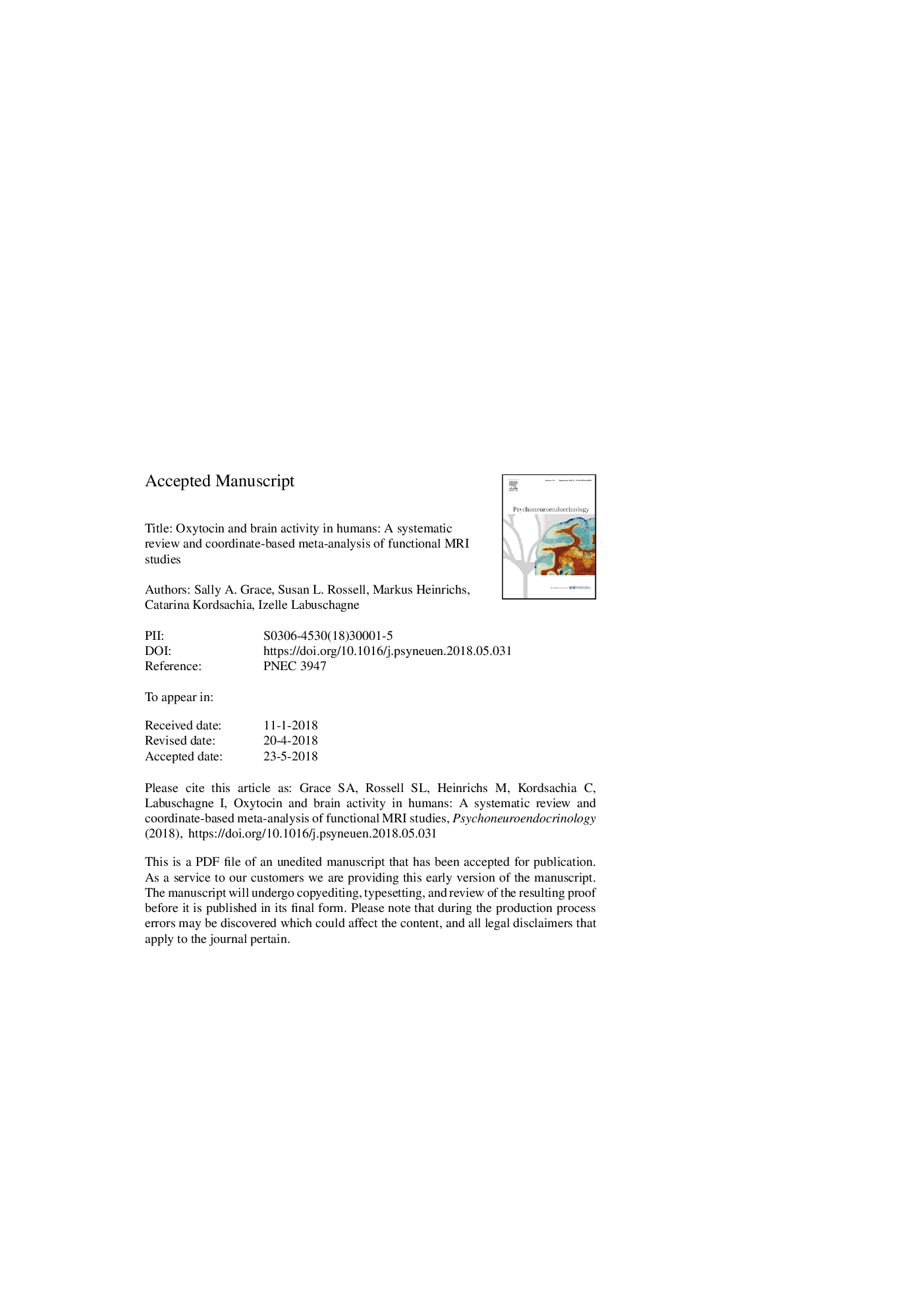| Article ID | Journal | Published Year | Pages | File Type |
|---|---|---|---|---|
| 6817482 | Psychoneuroendocrinology | 2018 | 74 Pages |
Abstract
Oxytocin (OXT) is a neuropeptide which has a critical role in human social behaviour and cognition. Research investigating the role of OXT on functional brain changes in humans has often used task paradigms that probe socioemotional processes. Preliminary evidence suggests a central role of the amygdala in the social cognitive effects of intranasal OXT (IN-OXT), however, inconsistencies in task-design and analysis methods have led to inconclusive findings regarding a cohesive model of the neural mechanisms underlying OXT's actions. The aim of this meta-analysis was to systematically investigate these findings. A systematic search of PubMed, PsycINFO, and Scopus databases was conducted for fMRI studies which compared IN-OXT to placebo in humans. First, we systematically reviewed functional magnetic resonance imaging (fMRI) studies of IN-OXT, including studies of healthy humans, those with clinical disorders, and studies examining resting-state fMRI (rsfMRI). Second, we employed a coordinate-based meta-analysis for task-based neuroimaging literature using activation likelihood estimation (ALE), whereby, coordinates were extracted from clusters with significant differences in IN-OXT versus placebo in healthy adults. Data were included for 39 fMRI studies that reported a total of 374 distinct foci. The meta-analysis identified task-related IN-OXT increases in activity within a cluster of the left superior temporal gyrus during tasks of emotion processing. These findings are important as they implicate regions beyond the amygdala in the neural effects of IN-OXT. The outcomes from this meta-analysis can guide a priori predictions for future OXT research, and provide an avenue for targeted treatment interventions.
Related Topics
Life Sciences
Biochemistry, Genetics and Molecular Biology
Endocrinology
Authors
Sally A. Grace, Susan L. Rossell, Markus Heinrichs, Catarina Kordsachia, Izelle Labuschagne,
